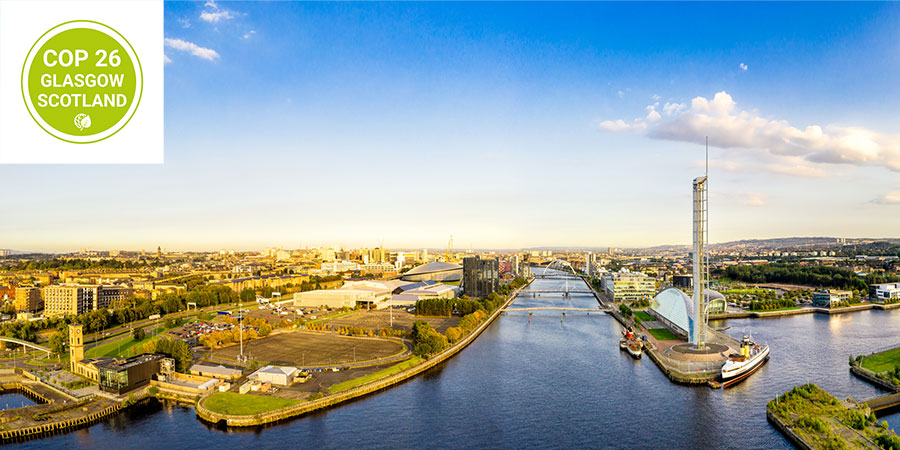
The complex COP26 Glasgow climate summit had one overarching job: “Keep 1.5 Alive”. That is, to inspire stronger emissions reduction commitments to keep open the possibility that the rise in global temperatures can be kept below 1.5°C.
Major progress was made. Before Glasgow the International Energy Agency estimated that announced policies worldwide would lead to 2.1°C of global warming if fully delivered. Then came a flurry of announcements from nations, regions and businesses. Midway through Glasgow the IEA said that the latest commitments, if fully delivered, would bring that down to 1.8°C.
In other words 1.5 is alive, though very much on life support. Success now depends on further strengthening pledges and implementing what’s already been committed. That has big implications for Australia, and for Australian industry.
Start with ambition. Most countries adopted stronger goals for 2030 and for long-term net zero emissions in the runup to Glasgow, and more deals were done during the conference. India, among the largest absolute emitters and the lowest emitters per capita, committed to net zero emissions by 2070 – slower than some, but a dramatic advance. All the major economies now have net zero goals, as Australia now does. Unlike Australia, most have also strengthened their 2030 commitments. At Glasgow all nations agreed to come back with higher 2030 pledges in the coming year, and to bring Ministers together every year to 2030 to push ambition further. Whatever the politics in Australia, the issue isn’t going away.
Commitments impacting Australia’s coal exports were also rife. While the agreed global call for ‘phase down’ of unabated coal power was a source of last-minute drama, much more significant was the concrete deal done by the EU and US to finance South Africa’s accelerated exit from coal power. Indonesia, the second largest coal exporter behind Australia, signalled its interest in a similar deal. The agreement between China and the United States also included coal phase down. Despite high export prices today, Australia will likely need alternate sources of export earnings in the years ahead.
One bright export hope is hydrogen, which has many potential applications in a decarbonised world, and could be made in enormous quantities in Australia as and when demand materialises. But it was clear at COP26 that a great many nations share Australia’s aspiration to the title of “hydrogen superpower”. Chile has even better sunshine and an aggressive national hydrogen strategy. Kenya is seeking investment in the production of hydrogen as a bunker fuel for global shipping. Many countries would like to be the Saudi Arabia of hydrogen, very much including Saudi Arabia. Australia will need to be on the ball to get a go.
On the hydrogen demand side, maritime fuel may emerge faster than anticipated given increasing policy asks in Europe, commitments by individual shippers and their major customers, and moves at the International Maritime Organization. Japan is very actively pursuing hydrogen opportunities, though their official thinking remains dominated by light transport and baseload power applications that are less plausible than chemistry, metals and heavy transport.
Steel saw major developments around the COP. Industry analysts highlighted that 71% of the global blast furnace fleet – more than 1000 Mtpa of capacity – requires reinvestment by 2030, and another 176 Mtpa of new capacity will also be needed. Technically sound and economically viable clean pathways are needed. Hydrogen direct reduction of iron seems poised to offer this, with samples of zero-emissions steel from SSAB’s Hybrit project passed around at COP. By contrast no carbon capture and storage steel projects are currently proposed worldwide. The EU-US agreed shortly before COP both to disarm their Trump-era metals tariffs and to design a trade deal to shut out dirty steel from participating markets.
A key barrier to industry investment in clean materials and products has been lack of firm demand willing to pay the existing cost premium. The First Movers Coalition, initiated by the World Economic Forum, the United States and 34 corporate partners, firms up commitments to clean shares of procurement in steel, trucking, shipping and aviation. Government policies to close cost and competitiveness gaps are also emerging, including the EU Carbon Border Adjustment Mechanism and industrial carbon contracts for difference.
Finally, COP26 achieved a long-awaited deal on the rulebook for Article 6 of the Paris Agreement, a focus of intense global business interest for the last six years. Article 6 sets out rules for global emissions trading and strong accounting for linkages between national policies. Whether Australia is going to export carbon abatement locked up in our forests, soils and subsurface, or import carbon units to ease our own transition, Article 6 now provides the legal framework. The final rules were hard-fought and offer strong protections against double-counting and reasonably low transaction costs. We’re unlikely to see a flood of cheap and dodgy units, but may see interesting arrangements between countries such as stapling carbon transactions to flows of physical goods.
On one front COP26 definitely failed: the chief negotiators from Mexico and Russia offered the head UK diplomat a bottle of tequila and vodka respectively if they could complete the COP on Friday 12 November as planned. The UK had to content itself with local Scotch when the final deal was gavelled through on 13 November.
But in other respects Glasgow was a significant success – another hefty lift as the world gradually bootstraps itself into success on climate. There’s much for industry to digest, and more to come at COP27 Egypt in 2022.
Ai Group participated closely in COP26 and observed a wide range of negotiations and side events, as well as contributing to statements and position papers on behalf of global business. Links to notes and documents are listed here.

Tennant Reed is Director - Climate Change and Energy at Ai Group. He has worked on these issues since 2008, advising Ai Group’s Leaders’ Group on Energy and Climate Policy; coordinating joint research and advocacy with wider energy stakeholders; facilitating the Australian Climate Roundtable; developing reports on energy prices, carbon border adjustments and business energy use; reviewing emissions targets for the State of Victoria; and closely observing international climate negotiations.